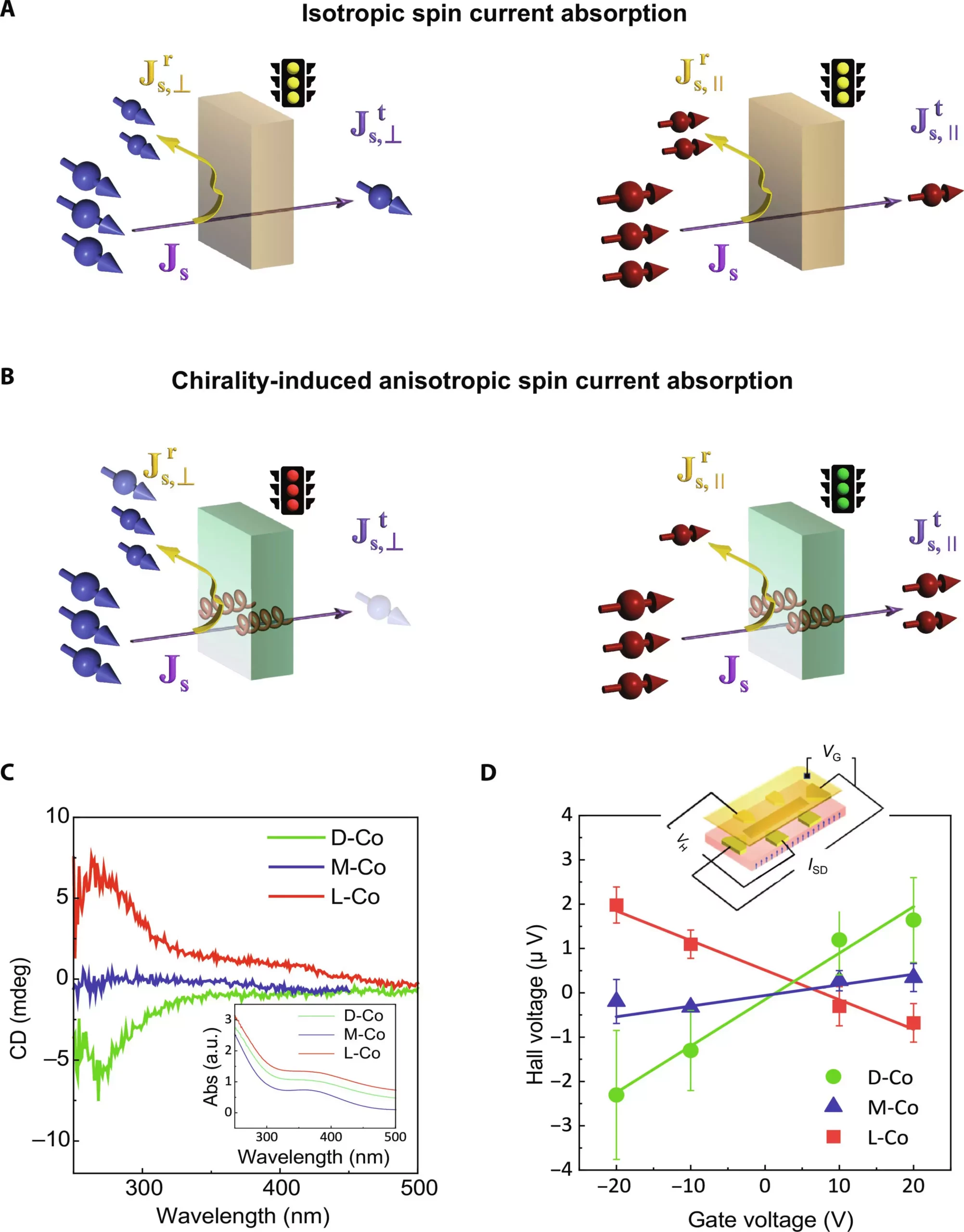Spintronics is a rapidly evolving field that focuses on utilizing the spin of an electron to create current and transfer information through electronic devices. Recent research conducted by a team from North Carolina State University and the University of Pittsburgh sheds light on how the spin information of an electron, known as a pure spin current, interacts with chiral materials. Their findings suggest that the direction in which spins are injected into these materials plays a crucial role in determining their ability to pass through them. This discovery could have significant implications for the development of energy-efficient spintronic devices for data storage, communication, and computing.
Chiral materials, such as chiral cobalt oxide thin films, exhibit a property known as chirality, which means they cannot be superimposed onto their mirror image. This unique characteristic allows researchers to control the direction of spin within the material. In the past, it was believed that the sense of chirality of a material was paramount in determining how spin would move through it. However, the recent study suggests that the angle between the spin polarization and chiral axis is also a critical factor. When pure spin is injected parallel or anti-parallel to the chiral axis, its absorption through the material significantly improves, indicating a potential breakthrough in the design of spintronic devices.
Experimental Approaches and Key Findings
The research team employed two different techniques – microwave particle excitation and ultrafast laser heating – to inject pure spin into chiral materials. Both methods yielded the same conclusion: the direction of spin injection relative to the chiral axis impacts the material’s ability to transmit spin information. Specifically, when the spin is aligned perpendicular to the material’s chiral axis, it does not travel through the material. However, aligning the spin parallel or anti-parallel to the chiral axis resulted in a remarkable 3000% improvement in its absorption and transmission capabilities.
The discovery of chiral “gateways” in spintronic materials could pave the way for the development of innovative electronic devices that rely on spin rather than charge to operate. By leveraging the unique properties of chiral materials, researchers may be able to design more energy-efficient and high-performance spintronic devices for various applications. Furthermore, the study challenges existing assumptions about the interplay between chirality and spin in materials, opening up new avenues for exploration and further research in the field of spintronics.
The study conducted by researchers from North Carolina State University and the University of Pittsburgh offers valuable insights into the behavior of spin information in chiral materials and its implications for the design of spintronic devices. By understanding how the direction of spin injection affects the transmission of spin information through these materials, scientists can unlock new possibilities for creating advanced electronic systems with enhanced efficiency and functionality. This research represents a significant step forward in the exciting field of spintronics and paves the way for future innovations in data storage, communication, and computing technologies.


Leave a Reply